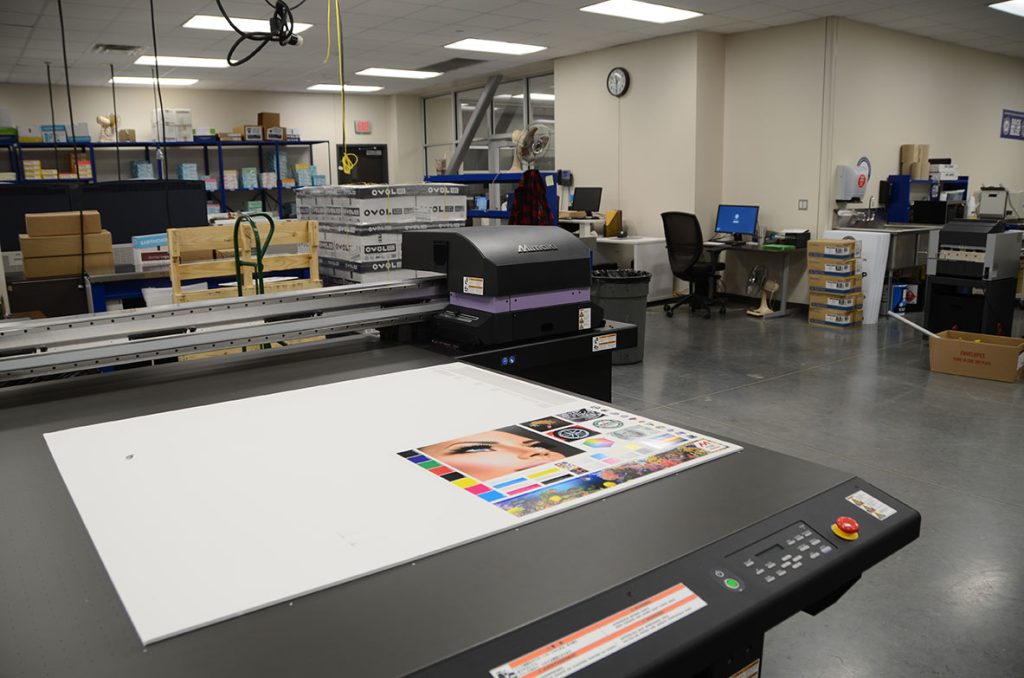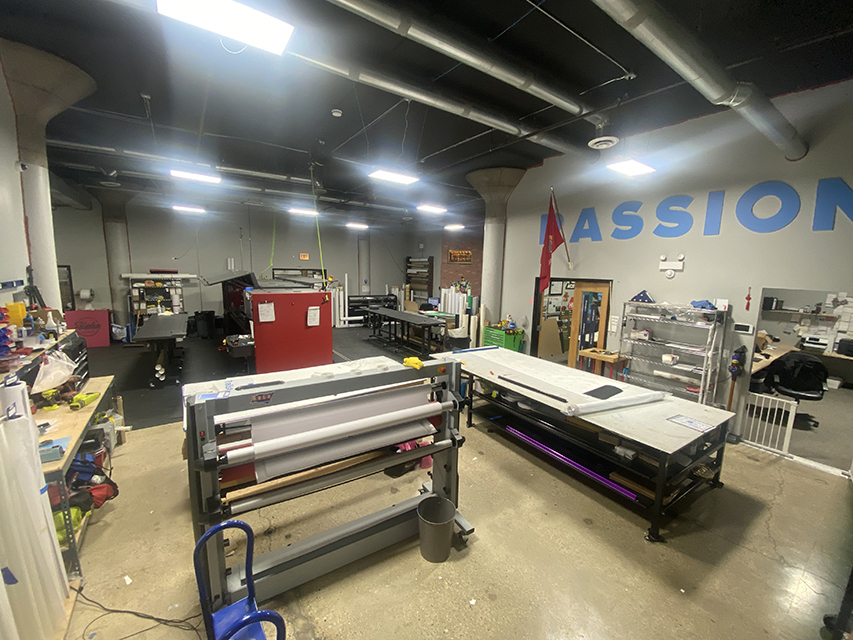Can I Print Personal Photos at a Print Shop Near Me?
Can I Print Personal Photos at a Print Shop Near Me?
Blog Article
The Ultimate Guide to Using Printing Solutions for Custom Art Prints
Guiding via the globe of customized art prints calls for a clear understanding of various printing services. Musicians have to take into consideration aspects such as printing techniques and products to attain the preferred end result. Each decision, from artwork prep work to color calibration, plays an essential role in the final product. As they discover these components, artists can reveal the potential for their work to get in touch with audiences in a significant way. What steps can they take to assure their prints attract attention?
Comprehending Different Sorts Of Printing Providers
Numerous people might neglect the intricacies of printing services, comprehending the various types offered is necessary for any person looking to create personalized art prints. The most common kinds include digital printing, balance out printing, and display printing. Digital printing is favored for its fast turn-around and ability to generate premium photos straight from electronic data, making it optimal for little runs. In comparison, offset printing deals superior image quality and is economical for larger quantities, making use of plates to move ink onto paper. Display printing, commonly utilized for textiles and advertising products, involves pressing ink with a mesh screen, enabling lively shades and textures. Each approach has its one-of-a-kind advantages and constraints, making it essential for musicians and developers to analyze their certain needs, such as amount, wanted top quality, and budget, prior to choosing a printing service that lines up with their imaginative vision.
Choosing the Right Materials for Your Prints
Selecting the ideal products is necessary for accomplishing top notch custom art prints. Recognizing the various kinds of paper and the significance of ink top quality can greatly impact the outcome. Artists should consider these elements to assure their vision is accurately represented in the published piece.
Paper Types Explained
Selecting the right paper type is important for accomplishing the preferred visual and longevity in customized art prints. Different options exist, each offering unique features. As an example, glossy paper enhances color vibrancy and detail, making it perfect for photography prints. Conversely, matte paper gives a softer surface, which is better for artwork that needs nuance and appearance. Art paper, frequently made from cotton or alpha cellulose, provides archival top quality and is ideal for recreating complex information in paintings (Print Shop Near Me). In addition, specialty documents, such as watercolor or canvas, can add special visual impacts. Eventually, picking the ideal paper kind will substantially influence the last discussion, ensuring that the art work is both aesthetically appealing and resilient
Ink Quality Issues
Ink top quality plays an important function in the overall success of custom-made art prints. Top notch inks ensure vivid colors, sharp information, and longevity, which are vital for showcasing imaginative work. When choosing printing solutions, artists ought to take into consideration pigment-based inks over dye-based alternatives, as they provide far better fade resistance and shade stability. In addition, the selection of ink should match the selected paper kind, enhancing the print's aesthetic influence. Ecological elements, such as moisture and temperature level, can additionally affect ink efficiency; for that reason, musicians should make inquiries concerning ink formulas that stand up to these elements. Eventually, spending in remarkable ink high quality can boost the final item, assuring that the art print remains real to the musician's vision for several years to find.
Discovering Printing Techniques: Digital vs. Conventional
While both electronic and standard printing methods have their special benefits, the choice on which method to utilize frequently rests on the specific requirements of the art work. Digital printing excels in versatility and rate, enabling fast turn-around times and the capacity to publish as needed. This approach is particularly helpful for musicians who call for special items or tiny runs, as it removes the requirement for extensive setup processes.Conversely, typical printing methods, such as lithography and display printing, usually produce richer appearances and colors, appealing to artists seeking a more tactile and genuine finish. These approaches can improve the depth and quality of the art work, making them suitable for bigger editions. Furthermore, conventional methods may offer a distinct aesthetic that digital printing occasionally has a hard time to reproduce. Eventually, the selection in between these methods ought to consider factors like desired quality, amount, and artistic intent, guiding musicians to the most ideal choice for their tasks.

Preparing Your Artwork for Printing
Efficiently preparing art work for printing calls for careful attention to information, no matter the chosen printing technique. Artists should ensure that their data are created at the appropriate resolution, usually 300 DPI, to preserve sharpness and clearness. The proper color mode, usually CMYK for print, is essential to accomplish the desired color precision. Artists ought to likewise take into consideration the dimensions of the artwork, ensuring to consist of hemorrhage areas if needed, to avoid any type of unwanted white edges after trimming.Additionally, data formats play a crucial role; TIFF and PDF are commonly liked for top notch prints. Prior to entry, it is very important to assess the artwork for any type of find out this here flaws or undesirable aspects. By carefully examining these facets, musicians can improve the likelihood of their prints lining up with their imaginative vision, eventually leading to a successful printing result.
The Value of Color Calibration and Proofing
Shade calibration and proofing are important action in the printing procedure, as they assure that the last output precisely mirrors the artist's vision. Proper shade calibration warranties that the shades displayed on the display match those that will be published. This process includes changing the display setups, printer accounts, and inks to attain a regular shade representation.Additionally, proofing allows musicians to preview their work before the last print run. This phase allows them to detect and rectify any type of inconsistencies in saturation, visit site information, or color, thereby minimizing costly errors. By utilizing hard-copy or electronic evidence, musicians can make enlightened decisions concerning changes needed for ideal results.Incorporating color calibration and proofing into the printing operations not only boosts the quality of the final product however also promotes a reputable collaboration in between the printing and the artist solution, guaranteeing complete satisfaction and integrity to the initial artwork.
Picking the Perfect Size and Layout for Your Prints

Advertising and marketing and Selling Your Personalized Art Prints
Advertising and marketing custom-made art prints requires a strong brand name identity to stick out in an open market. Effective online promo techniques and the calculated use social media platforms can greatly boost exposure and engagement. By incorporating these aspects, musicians can develop a compelling visibility that draws in possible customers.
Building Your Brand Identity
Establishing a strong brand identification is vital for musicians wanting to efficiently market and offer their custom art prints. This identity includes the musician's distinct style, worths, and tale, which reverberate with potential purchasers. Artists ought to produce a natural visual visibility throughout all systems, including logos, color design, and typography that reflect their artistic vision. Furthermore, a clear mission statement aids interact the musician's purpose and interest. Engaging narration concerning the motivation behind each item can promote psychological links with the target market. Uniformity in messaging, whether on social media sites or packaging, boosts recognition and trust fund. By carefully curating their brand identification, artists can differentiate themselves in an open market, bring in faithful customers who appreciate their artistry.
Efficient Online Promo Strategies
What methods can musicians utilize to properly advertise their customized art publishes online? Initially, creating a professional website showcasing the art work is vital. This website must include top quality photos and comprehensive descriptions to involve potential customers. Furthermore, artists can make use of e-mail advertising and marketing by constructing a customer list to share updates, promos, and brand-new releases. Working together with bloggers and influencers in the art community can broaden reach and reputation. Using special items or limited-time price cuts can also create urgency, motivating purchases. Furthermore, maximizing material for search engines through pertinent key words will certainly enhance presence. Lastly, maintaining a blog site regarding the artistic procedure can draw in art enthusiasts, cultivating a much deeper link with the target market and enhancing the total marketing approach.
Making Use Of Social Network Platforms
Social network platforms work as powerful devices for artists looking to market and sell their customized art prints. By leveraging platforms like Instagram, Facebook, and Pinterest, musicians can display their work to a large target market. Involving visuals and calculated hashtags can increase exposure, attracting potential buyers to their accounts. Routinely uploading content, such as new layouts or behind-the-scenes processes, aids preserve target market rate of interest and cultivates a feeling of area. Furthermore, artists can use targeted advertising and marketing to get to certain demographics, improving the possibilities of sales. Collaborations with influencers or various other artists can further enhance exposure. Eventually, a well-curated social media sites presence not only advertises customized art prints however likewise builds a faithful consumer base gradually.
Regularly Asked Inquiries

How Do I Locate Trusted Printing Solution Providers?
To locate reliable printing company, one ought to investigate on the internet evaluations, seek suggestions from peers, contrast portfolios, request samples, and evaluate customer support responsiveness. This extensive method assurances informed choices and satisfying end results.
What Is the Normal Turn-around Time for Custom Prints?
The normal turn-around time for personalized prints differs by company, however typically varies from a few days to 2 weeks. Variables affecting this include order dimension, complexity, and the particular printing methods utilized.
Can I Get a Reimbursement if I'm Not Pleased With My Prints?
The question of getting a refund for unsatisfactory prints often relies on the details printing service's plans. Several business supply complete satisfaction assurances, while others may have stringent return conditions, stressing the relevance of evaluating terms in advance.
Exist Any Kind Of Hidden Expenses Connected With Printing Providers?
Many printing solutions might include surprise costs such as setup costs, shipping costs, or surcharges for certain products. It's vital for customers to ask about all possible expenses prior to finalizing their order.
Just How Can I Ensure My Prints Are Ecologically Pleasant?
To assure prints are ecologically friendly, one need to choose environmentally friendly inks, recycled paper, and lasting printing practices. Researching printing solutions that prioritize sustainability and getting accreditations can further ensure marginal ecological effect in the printing process. Guiding through the world of personalized art prints calls for a clear understanding of numerous printing services. Lots of people may forget the complexities of printing solutions, understanding the various kinds available is crucial for any person looking to create custom-made art prints. The most common kinds consist of electronic printing, offset printing, and display printing. Efficiently preparing artwork for printing calls for mindful interest to detail, no matter of the picked printing technique. Prints intended at galleries might require basic dimensions to promote framing, whereas one-of-a-kind formats may appeal to collection agencies looking for something distinctive.Lastly, the printing solution's capacities have to be evaluated.
Report this page